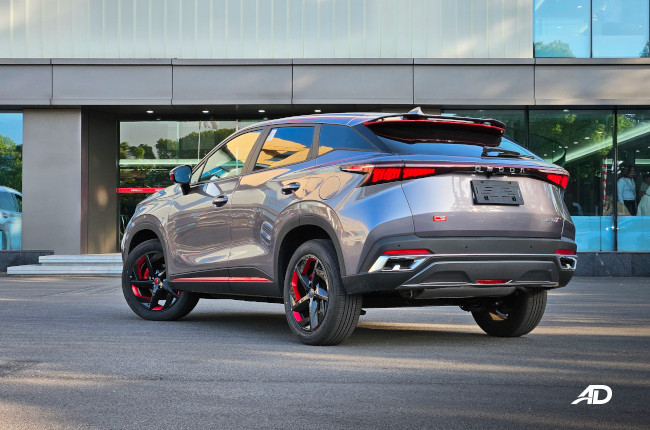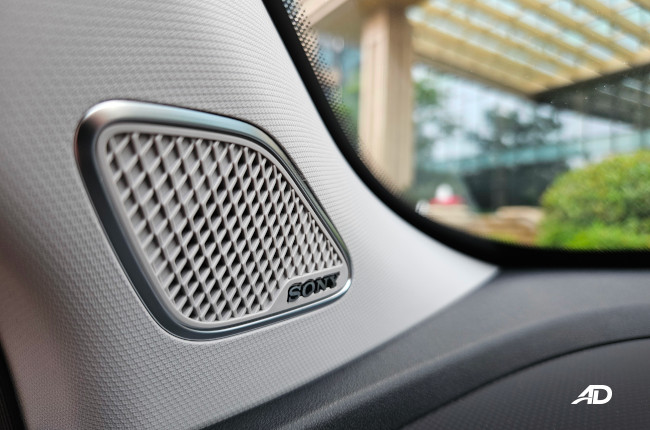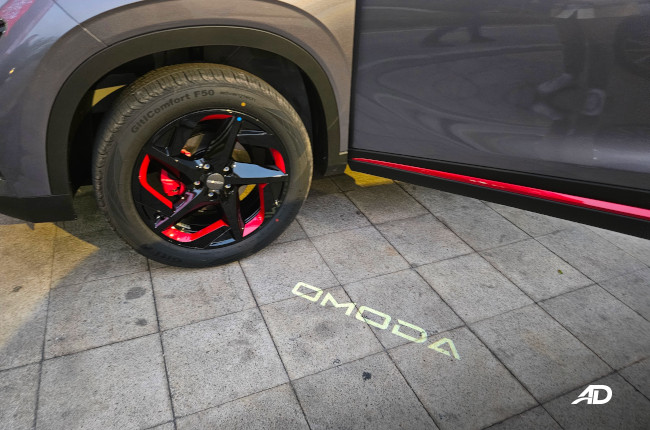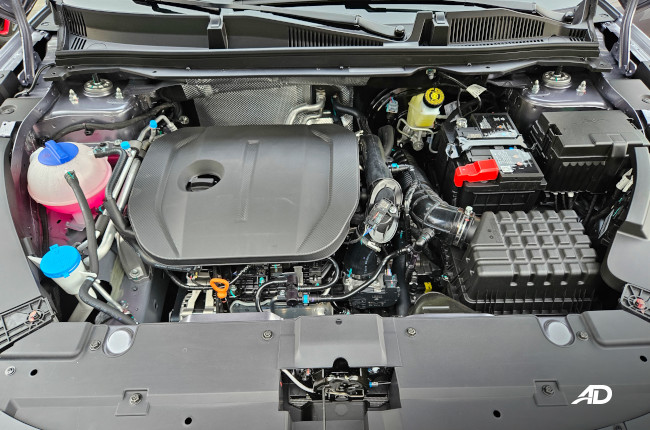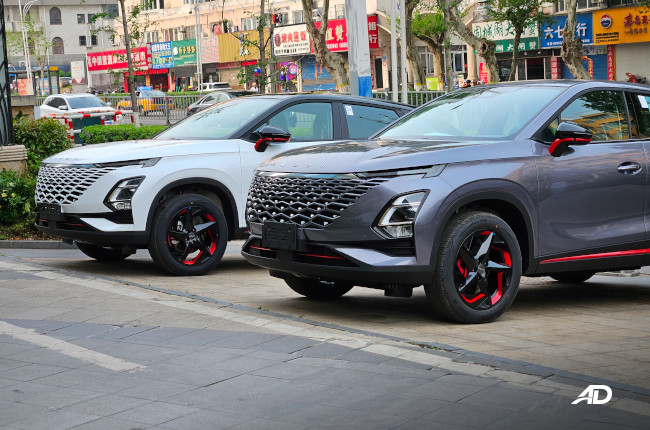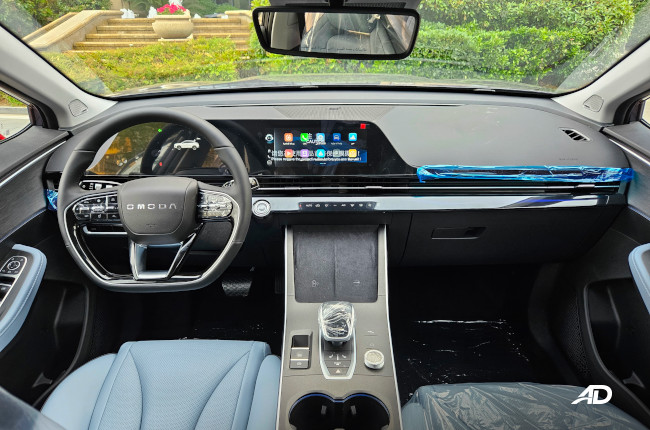
One of our anticipated launched happening later in the year is for the OMODA and JAECOO brands. These two new marques are looking to get a piece of the pie in the Philippine market by offering cars that appeal to a younger generation under OMODA, and cars that evoke a sense of strength under JAECOO. After the brand gave us an opportunity to go abroad and experience their models, a few thoughts have come to mind, and here are the initial impressions that came through after some time with the cars.
Before anything else, it’s important to note that the cars that were tested weren’t yet in their final specification for the Philippine market. In fact, there was also one model that is a pre-sale unit that was destined for another country. The other OMODA 5 is an old model that was slightly incomplete, but still drivable and usable. In fact, the OMODA brand director asked me personally if there are things that I didn’t like about the car, and let’s just say that I had a bit of a hard time, but that didn’t stop me from nitpicking a lot.
Exterior
The OMODA 5 is striking in some angles, but a bit awkward in others. You could say that the design is a bit polarizing, but in general, it seems like a well-thought-out exterior with cuts, curves, and dimensions that are in keeping with the brand’s identity. The OMODA 5 looks good, but only until you hit an awkward angle. In my opinion, the car looks best when viewed at a quarter, so all the photos lined up above are what I feel to be its best looks, while the photos lined up after this paragraph are all photos that I feel don’t really hit the right spots if you catch my drift.
Exterior equipment on the OMODA 5 includes LEDs all around for the headlights located below the daytime running lights (DRLs), and then the foglamps positioned at the bottom of the bumper. The taillights are also an all-LED affair, and their design is inspired by a barcode, definitely a nod to China’s prolific use of QR codes. As the designer puts it, it’s “sending a message in the digital age,” but I doubt that running this through a barcode scanner would work, so it’s just eye candy here, though it is a nice design. Oh, and before we move on, the indicators are also sequential as a bonus.
Overall, the initial impressions are looking good, but there are a few shortcomings like fake exhaust tips which don’t really do it for me, and also lots of chrome. The wheels are a nice touch, however, with their red accents and their blacked-out spokes. Personally, I’m not a total fan of red accents, but the OMODA 5 wears it decently. So far so good on the outside with a thoughtful and interesting design, so not too shabby, OMODA.
Interior
Given the short amount of time that I was allotted with the car and the fact that its ready-to-export form was mostly covered in plastic, I will say this: The OMODA 5 has a very decent and lively interior. Just like the exterior, the interior is also thoughtful and ergonomically sound. Plus it has a good selection of materials on the seats, the sidings, the steering wheel, and the center console, with the exceptions being the air conditioning controls, some plasticky buttons, and glossy plastics on the steering wheel.
The seating material was done in a light blue color which is unlike anything we’ve seen in the Philippines. Given that most Filipinos would prefer a black interior instead of a light-colored one, OMODA might also field a black-colored interior for the model. Even when trimmed in black leather, however, there is still a bit of style in the mix with beige piping outlining the seats. Without taking into account consumer preferences for interior trim color, however, the seats themselves are soft and well-bolstered, which is also echoed in the back row. Space is enough for average-sized Filipinos, but it’s not class-leading. One thing that may be complained about is the material on the door cards which is plastic. OMODA’s representatives stated that they can provide upper door sidings with soft-touch material. If done, I feel that it will give the interior a more comprehensive and less compromised look.
Also, I made it clear to OMODA that the piano-black plastics on the steering wheel and the air conditioning controls were not to my liking, especially the ones located on the steering wheel. Perhaps we could see this changed, but so far, those are what I considered to be sore spots in the interior design of the OMODA 5.
Technology
OMODA stated that the model will come with an Advanced Driver Assistance System (ADAS) which will include adaptive cruise control, lane-keep, and other advanced features and also other stuff like blind-spot detection and also an autonomous braking system. This alone will make the OMODA 5 a worthy competitor in the Philippines, at least in terms of advanced safety systems, though there’s more than just one cherry on top of this sundae.
So on top of the headlining ADAS package, the OMODA 5 can also come with a 360-degree camera system, a digital gauge cluster, and a widescreen infotainment system with Apple CarPlay and—wait for it—Android Auto, plus Sony speakers which I'm guessing is a six-unit system. Other Chinese brands aren’t too consistent with their smartphone pairing applications, so we’re glad to see that the two most popular standards are on the OMODA 5. Apart from that, the car also comes with a voice command function that’s actually quite responsive. There are a ton of commands that you can input and they go beyond just answering a phone call. You can actually open the sunroof (yes the OMODA 5 can also come with a sunroof), open the windows, turn on the air conditioning, and even open the power liftgate. It’s more responsive than expected as well.
Though, we feel that a little more refinement can go a long way, it appears as if the OMODA 5’s got a lot of things going for it, at least at the trim level that was shown to the media while in China. There are better things yet, it took a half afternoon for me to realize that the model also has ambient lighting which was a very welcome addition. You can customize this in the infotainment screen as well, to help personalize your drive. It was a nice surprise at the end of the day, and something that I'd like to see in action at night while driving.
Driving and Handling

Initially, I thought that the car would have the trademark China car delay that plagues a lot of other brands’ models. Safe to say that the 148 hp and 230 Nm 1.5-liter engine doesn’t suffer too much from this. The CVT is pretty well tuned for the engine, which returns a level of response that I reckon would do well in traffic. There are also driving modes, and I put it in sport mode for ample response so that could be a contributing factor to how well the response went through the accelerator.

Meanwhile, handling was extremely light which is great for in-city driving, but not so great in terms of feel, although the cThe chassis, on the other hand, felt great while going over road imperfections. The suspension is good for going on smooth roads, for sure, but going over roads similar to EDSA will have to wait as the testing facility we got was well-paved. The rear suspension is a torsion beam, which is to say that it is semi-independent. While I'm not too enthused at the setup, I'm at least happy to report that it was comfortable enough for Chinese roads.

At higher speeds, the wind noise didn’t penetrate the cabin all too much, and it felt good while driving it fast. OMODA’s parent company has facilities for noise, vibration, and harshness testing, so it’s no surprise to see the model perform well up to highway speeds.

Overall, the drive was without drama, and the engine responded pretty well while I was behind the wheel. The biggest question mark following this test drive was how was the model going to fare over more imperfect roads. To that, I feel that the full review will shed more light on the topic.
Initial verdict
In a nutshell, the model isn’t too bad in its current spec. I feel that it is a competent car with a decent motor and transmission, plus the myriad of features that it already comes with. I might have to reserve my final judgment on this automobile for when the official price comes out but OMODA has promised that this particular vehicle will go for under P1,500,000 so let’s hope that they stay true to that promise.
Exterior Photo Gallery
Interior Photo Gallery
Latest Review
-
Addictively excessive: The Ford Ranger Raptor Twin Turbo V6 / Review
The Ford Ranger Raptor Twin Turbo V6 is one crazy pickup truck. Wondering why? Just keep reading.
4.6 / 5 -
The Kia Carnival gives you more: More seats, more comfort, and more practicality / Review
The Kia Carnival is a three-row MPV designed for executives and families. It combines comfort, technology, and practicality, making it a strong choice for those looking for a premium people...
4.2 / 5 -
The Jetour Ice Cream: A pint-sized EV that’s hard to ignore / Review
The Jetour Ice Cream is an adorable, pint-sized electric car that’s made for the city. Affordable and stylish, it’s easy to love, but does it tick all the boxes for you?
3.7 / 5
Popular Articles
-
Cheapest cars under P700,000 in the Philippines
Jerome Tresvalles · Sep 02, 2024
-
First car or next car, the Ford EcoSport is a tough package to beat
Jun 18, 2021
-
Car Maintenance checklist and guide – here’s everything you need to know
Earl Lee · Jan 12, 2021
-
Most fuel efficient family cars in the Philippines
Bryan Aaron Rivera · Nov 27, 2020
-
2021 Geely Okavango — Everything you need to know
Joey Deriquito · Nov 19, 2020
-
Family cars in the Philippines with the biggest trunks
Sep 20, 2023
-
Head to head: Toyota Rush vs. Suzuki XL7
Joey Deriquito · Oct 28, 2020
-
Why oil changes are important for your car
Earl Lee · Nov 10, 2020
-
2021 Kia Stonic — What you need to know about it
Joey Deriquito · Oct 16, 2020
-
Top 7 tips for buying a used car in the Philippines
Joey Deriquito · Nov 26, 2020



